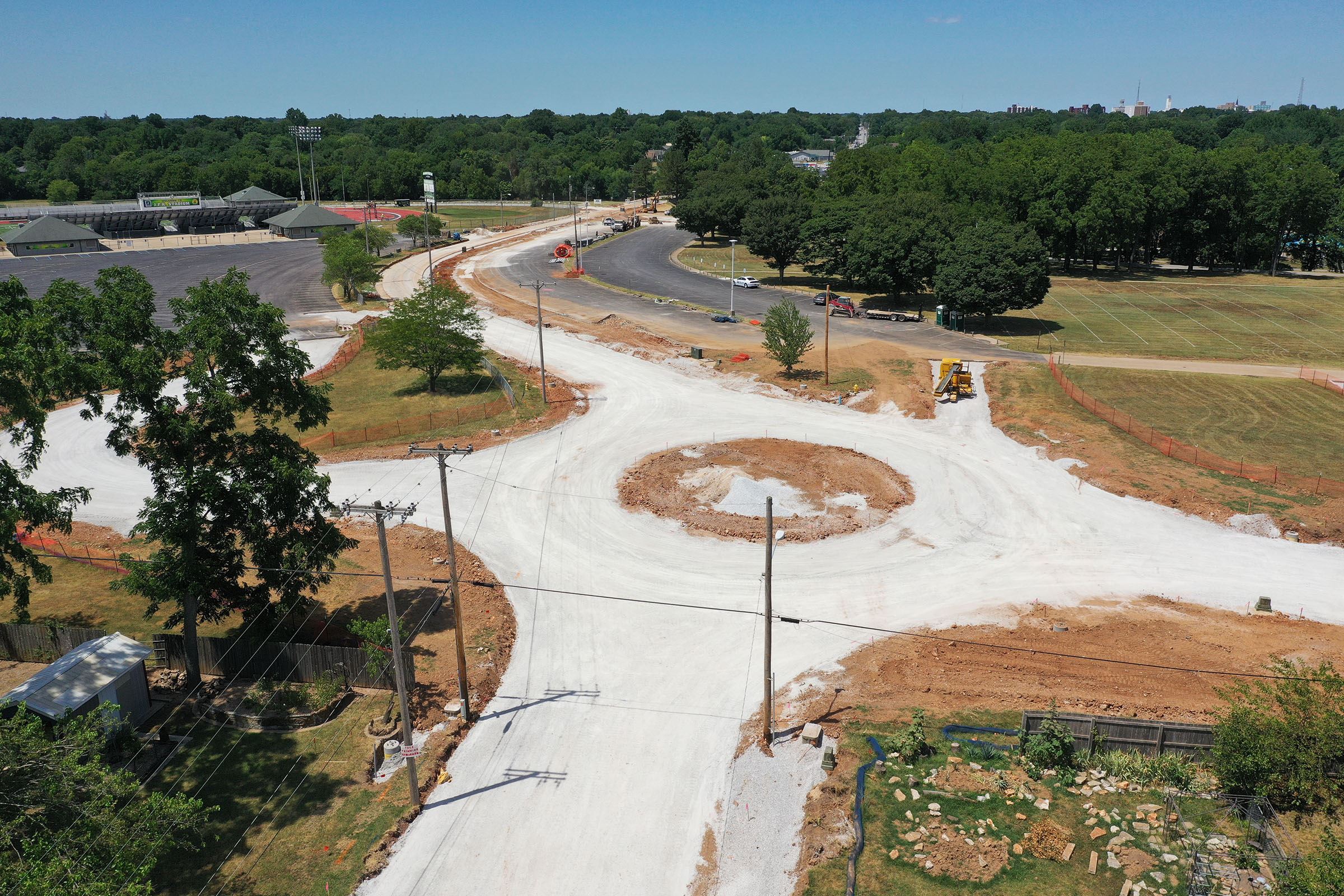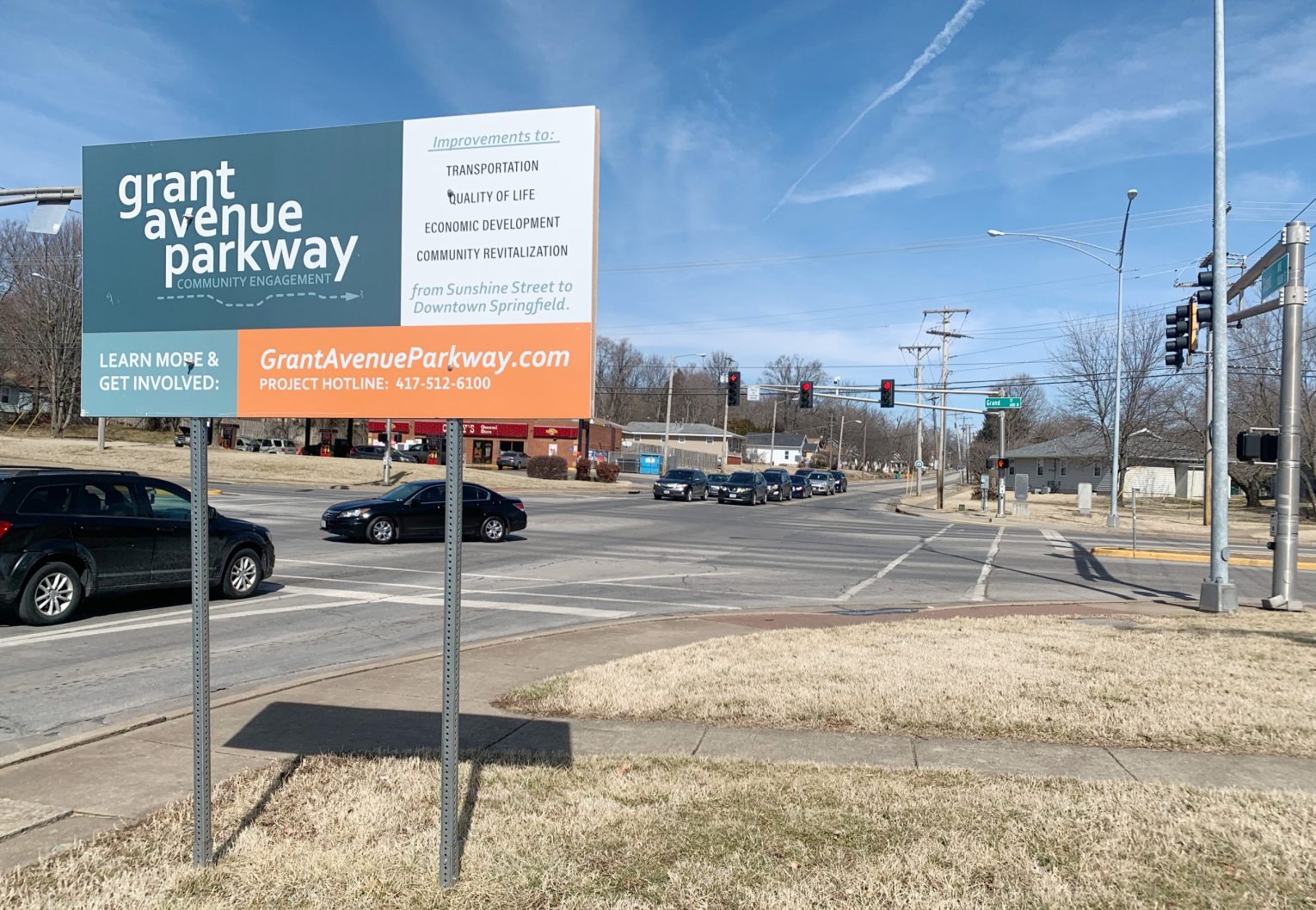Springfield's elected leaders hope a plan for the property surrounding Grant Avenue will help people stay in the neighborhood and live in their own homes, as opposed to selling and moving away as Grant Avenue undergoes a $25 million reboot.
The Springfield City Council voted 8-0 to pass a bill and 8-0 to pass a resolution relating to property surrounding Grant Avenue Parkway, particularly the stretch from Fassnight Park to the City Utilities bus station.
The City Council bill enacted Nov. 28 designates a Grant Avenue Parkway Redevelopment Area from a south boundary on Catalpa Street to a north boundary at Olive Street. The tax abatement incentives found in the bill are meant to give people who live along Grant Avenue, and from Douglas Avenue to the west and Campbell Avenue to the east, a safe and viable place to call home.
Adam Jones, a senior project manager with PGAV Planners, said a crucial goal is to prevent gentrification, the improvement of property at the cost of displacing people.
“We don’t believe anybody should be forced out of the neighborhood if they don’t want to be,” Jones said.
The redevelopment area is a smaller arm of the larger Grant Avenue Parkway development plan. The $25 million Grant Avenue Parkway project is a plan to create an off-street pedestrian and bicycle pathway along Grant Avenue from Sunshine Street to College Street in downtown Springfield. The south hub of the project area is the Wonders of Wildlife National Museum and Aquarium on Sunshine Street off of Campbell Avenue. The northern hub is the IDEA Commons at Mill Street with a proposed center city loop around part of downtown Springfield.
“We really wanted to bring forward and try to accomplish goals that were brought forward from the GAP Corridor Plan,” Jones said. “This work was just another step in the Grant Avenue planning process and placemaking process of which the community of Springfield has been involved for several years.”
The resolution approved Monday night assigns the duty of approving tax abatement applications to the Springfield Land Clearance Redevelopment Authority.
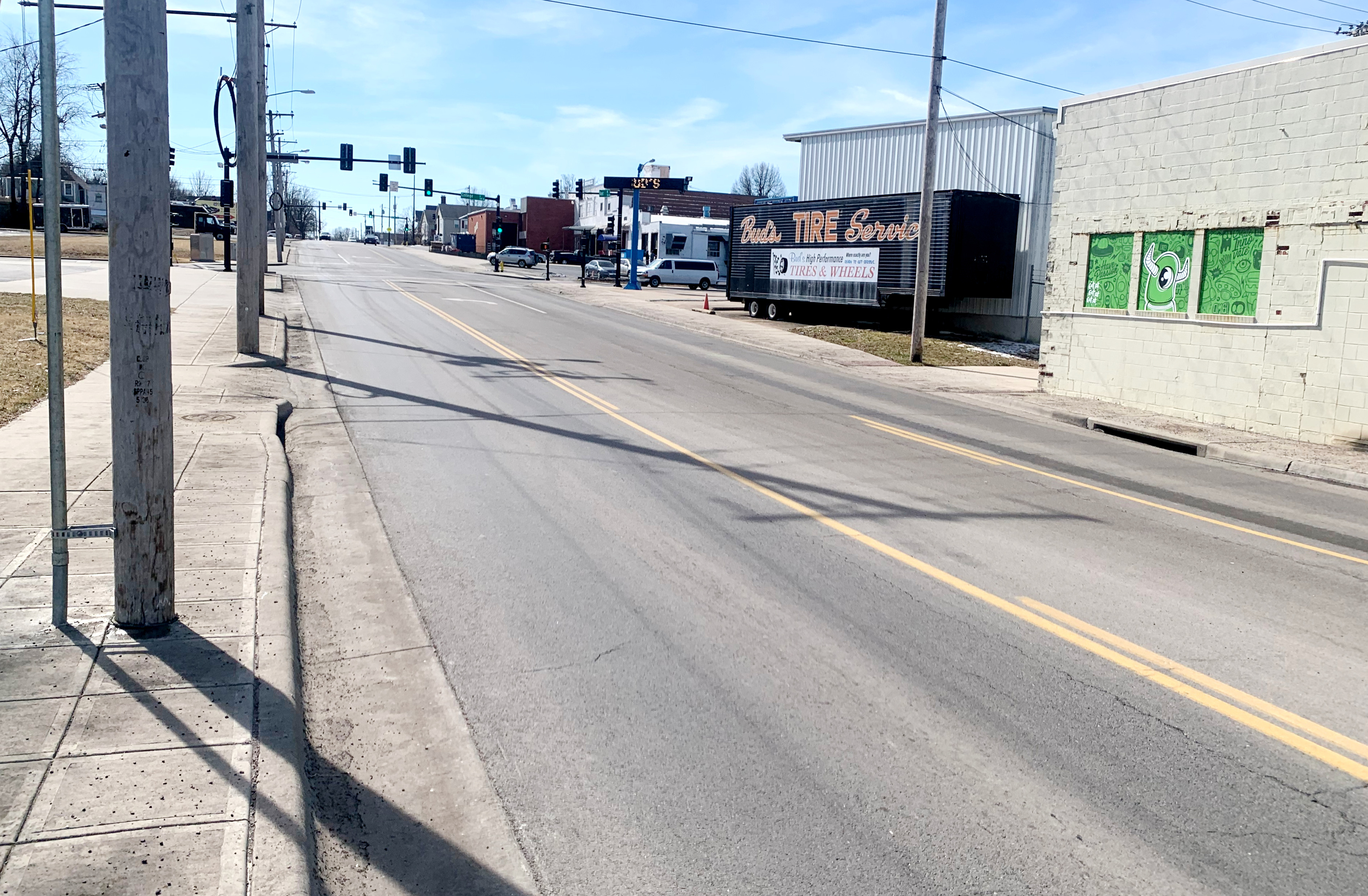
Preventing gentrification
On Nov. 14, Jones told the Springfield City Council that tax abatement incentives could be used to prevent people from being displaced from the neighborhood as Grant Avenue Parkway grows and develops.
“We wanted to create a plan that would not necessarily drive people out of the existing neighborhood,” Jones said. “We wanted to create a plan that would allow people to stay in place while allowing them to also reinvest in their properties.”
Councilman Craig Hosmer questioned Jones’ assertion.
“In what way is the city or is the plan going to encourage people to stay in their own homes and not be bought out and moved out by developers?” Hosmer asked.
“If they’re able to make savings on not having to make property tax payments every year for upwards of 10 years, then it allows them to take that money and reinvest it in their property,” Jones said. “That allows them to build more equity in their home.”
If tax rates stay the same, Jones said landlords have more reason to keep rates down.
“Most of the times when rents rise, it’s a function of rising taxes,” Jones said. “If you’re able to take that away, then rents should stabilize and stay flat.”
Hosmer asked for City Hall staff to examine any incentives, or perhaps legal requirements, for home ownership that could be tied to the redevelopment program for Grant Avenue.
“I think we've still got one of the highest percentages of rental properties in the country, and again, I think that's a recipe for disaster for the city of Springfield,” Hosmer said.
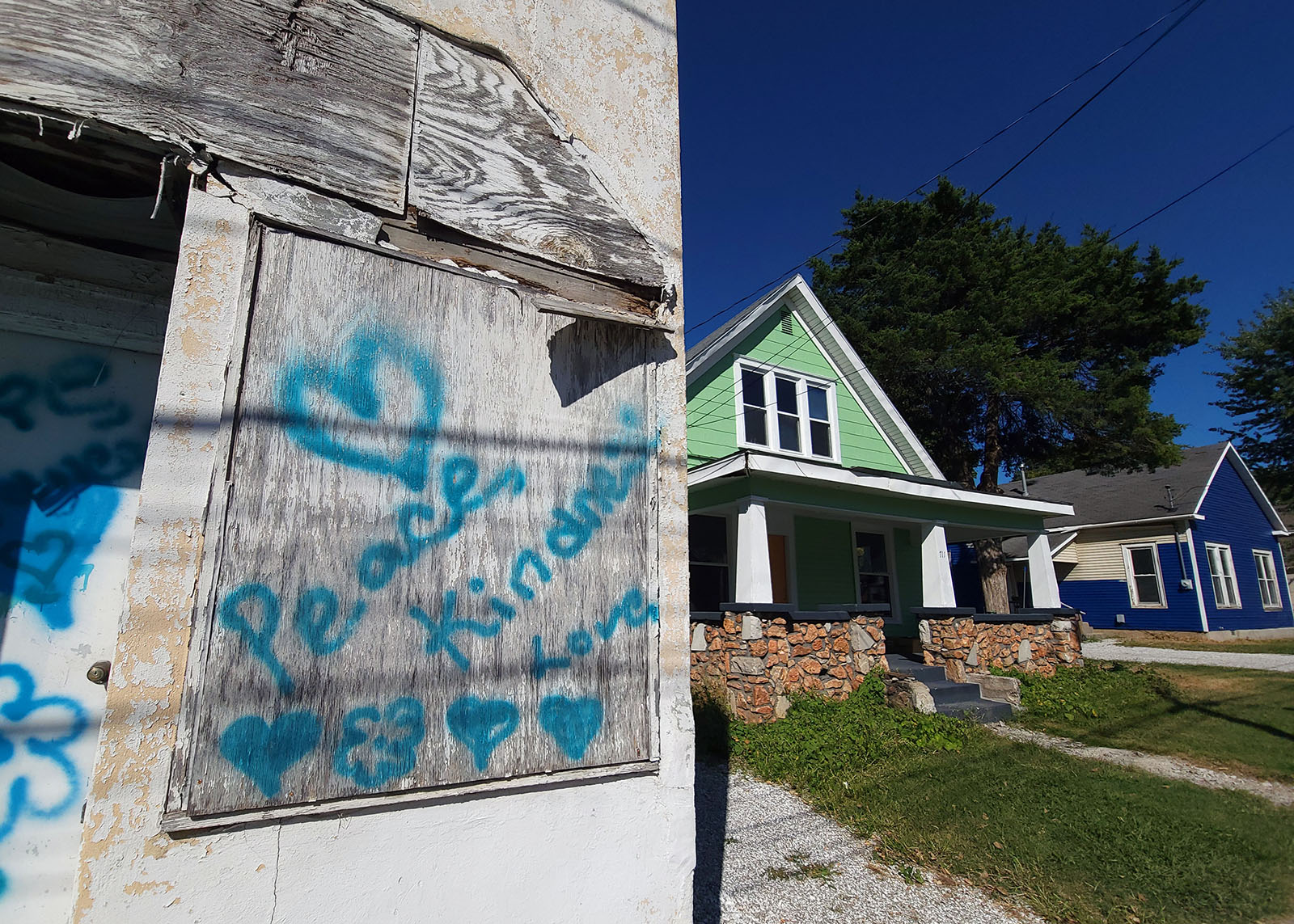
Timeline of events
On March 11, 2021, the Springfield Planning and Zoning Commission adopted the Grant Avenue Parkway Corridor plan, also known as the GAP Corridor plan.
“The GAP Corridor plan focuses on those areas adjacent to the Parkway from College to Catalpa Streets that are generally within 500 feet east and west of the Grant Avenue centerline, as well as Grand Street,” the introduction to the document reads.
The concept is to think outside of traditional planning and zoning, and to “capitalize and encourage redevelopment and reinvestment” on property that falls inside the Grant Avenue corridor. It is not a legal document, but a set of guidelines.
In June 2021, the city of Springfield established the Grant Avenue Parkway zoning district.
In August 2021, the Springfield City Council allocated money for a consultant to conduct a blight study for the area identified as the Grant Avenue Parkway corridor. The City Council later vetted and hired PGAV Planners.
The consultants examined 699 pieces of property, and 93 percent of those properties had “some type of a blighting factor,” in their findings.
“Seeing some of the facts and figures made it very clear that this blighting designation was certainly warranted,” Councilman Mike Schilling said. “Some of the worst areas were west of Grant Avenue, actually, according to the study.”
In addition to a blight rate of above 90 percent in the project area, the dollar figures tied to the 699 properties stood out to Schilling.
“The devaluation of that area’s properties over the course from 2010 to 2021, I think it went from a high of $16 million and declined down to a little more than $11 million, so it sure exemplified the deterioration and so forth, and disinvestment for the area,” Schilling said.
Missouri law defines a “blighted area” as an area that, “by reason of the predominance of unsanitary or unsafe conditions, deterioration of site improvements, or the existence of conditions which endanger life or property by fire and other causes, or any combination of such factors, (hinders) the provision of housing accommodations or constitutes an economic or social liability or a menace to the public health, safety or welfare in its present condition and use.”
“It can mean disinvestment, it can also mean physical deterioration,” Jones said. “The state legislative body changed the definitions so that they’re all consistent now.”
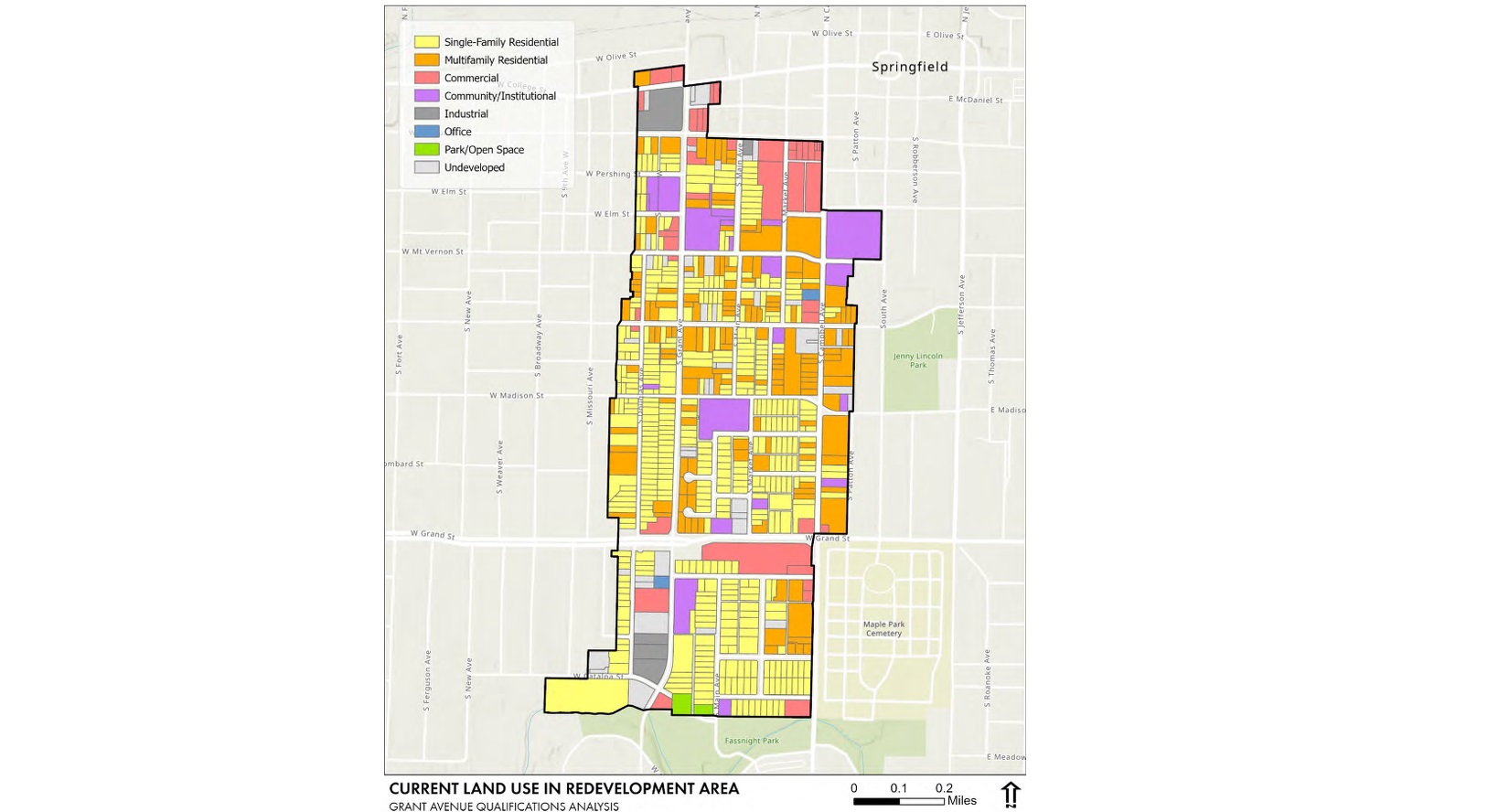
Two tools to spur renovations and rebuilds
Jones referred to two chapters of Missouri law governing tax abatement programs.
“These are two of the best tools that you can use within the state that will make allowances for people to invest in their homes while abating the property taxes,” Jones said.
Chapter 99 of the Missouri Revised Statutes abates or freezes real property taxes for a period of up to 10 years, preventing property tax rate increases. Jones said individual property owners should be able to go from the application process to approval in as few as 22 days.
Chapter 353 is 100-percent abatement for 10 years and 50-percent abatement for the next 15 years, for a total incentive spanning 25 years. It keeps the taxable value of a piece of land at a flat rate.
“We envision, I think, the city envisions that Chapter 99 would be used for single family residences and Chapter 353 might be available for more organized developers that are looking to bring major projects to the corridor in the future,” Jones said. “The development community requested that we provide them with flexibility; they wanted more than one tool that could help them create visions within the corridor.”
On Sept. 29, Springfield city employees and PGAV consultants met with about 30 property owners to explain the tax incentives. The Chapter 99 abatements, according to PGAV, are also a good incentive for landlords who are renting to tenants at risk of defaulting or being evicted.
The Grant Avenue dividing line
While it's not absolute, there is an imaginary line between home ownership and home rental down the middle of Grant Avenue.
“We do know that there are quite a few properties, especially on the east side of Grant Avenue where they were looking to turn those properties over into rental properties,” Jones said. “Given the amount of investment that would be required west of the corridor, it was not financially feasible for them to do so.”
Residents of Douglas Avenue are more likely to own houses, while there is a mixture of rentals and home ownership among people who live between Grant Avenue and Campbell Avenue. The closer a property is to Missouri State University, the more likely it is to be a rental.
“Most of your owner-occupied units are going to be west of the corridor, and most of your rental properties are going to be east of the corridor toward the college,” Jones said.
Keith Ray Mackie has been an outspoken participant in discussions of Grant Avenue Parkway, and lives four-tenths of a mile from the intersection of Grant Avenue and Grand Street. He spoke to the City Council Nov. 14, and asked for a public information and education effort to support the tax abatement programs.
“That may need to be some dramatic type of neighborhood outreach, because these are folks that are not used to interacting with government frequently — the paperwork, the documentation — some assistance would be useful,” Mackie said.
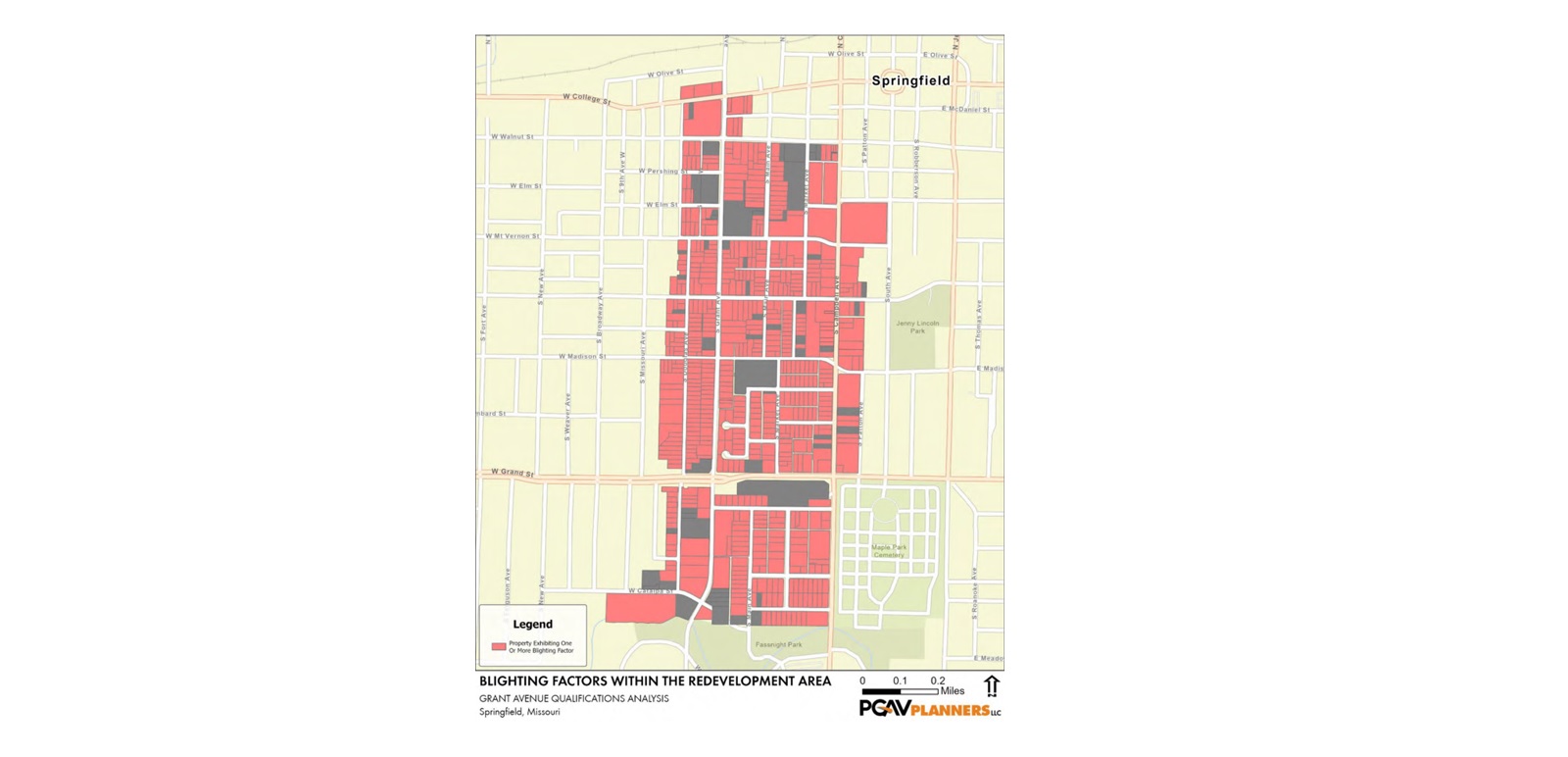
Numbers to know
The city of Springfield must pay $5 million to meet a 20-percent match requirement on a $20.9 million grant to fund construction of the three-mile-long Grant Avenue Parkway.
Springfield qualified for a federal grant program called Better Utilizing Investments to Leverage Development (BUILD). Applicants have to show that their projects improve safety, access and quality of life, or provide some other environmental benefit to qualify for the U.S. Department of Transportation’s grant program.
Under the current terms of the design, there are no plans for the city to take property or forced relocations through the use of eminent domain. There will, however, be right-of-way acquisition and construction easements.
There are 24 vacant homes in the development area between Catalpa and Olive. The consultants found about 250 parcels of land, or 36 percent of the property shows, “evidence of deterioration.”
“Approximately 46 properties within the redevelopment area exhibited signs of unsanitary or unsafe conditions. The conditions included vacant structures, public dumping, excessive litter, farm animals (chickens and ducks) in streets, and areas with overgrown vegetation that act as habitats for vermin,” the PGAV report reads.


